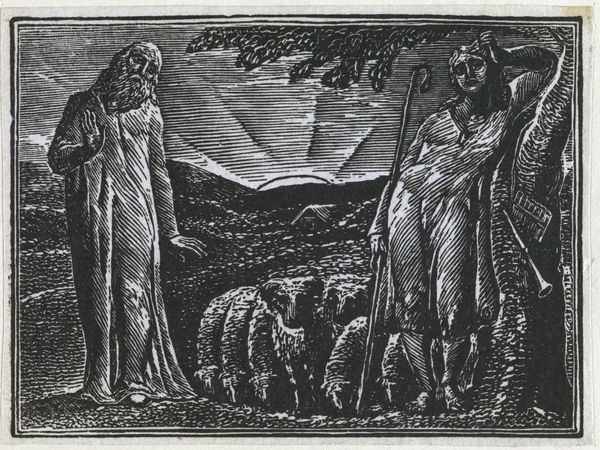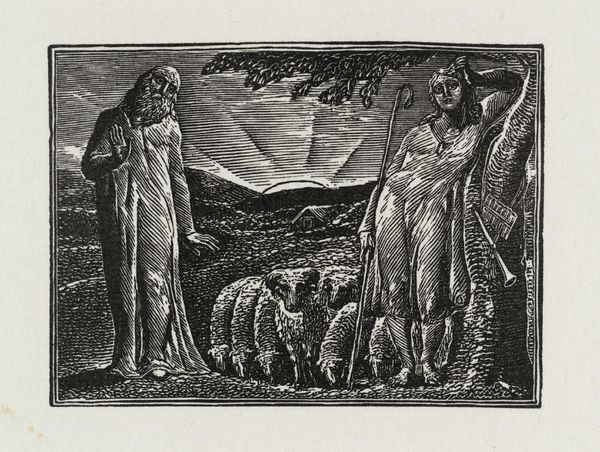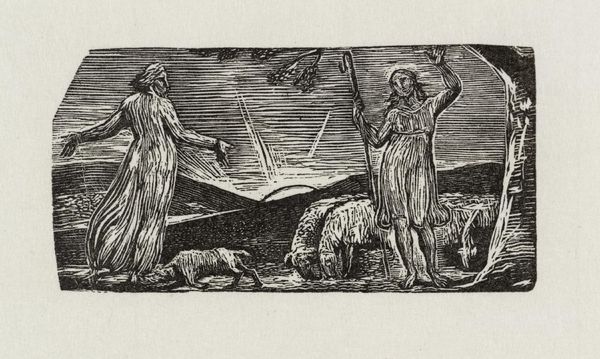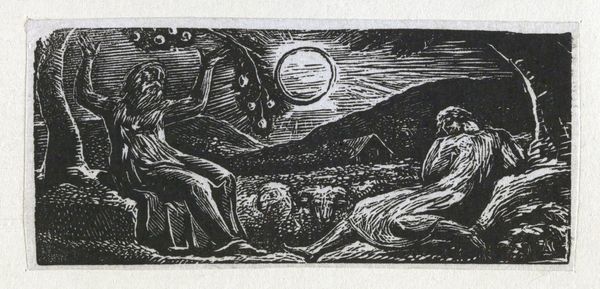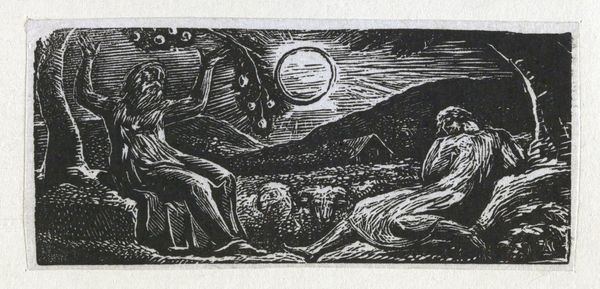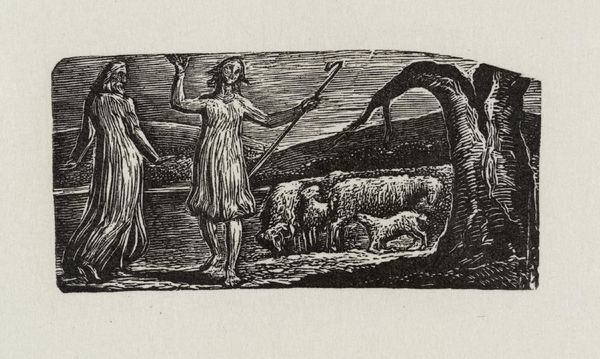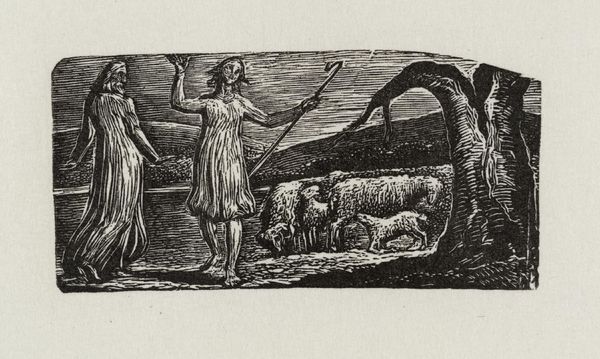
Dimensions: image: 62 x 84 mm
Copyright: CC-BY-NC-ND 4.0 DEED, Photo: Tate
Curator: This is William Blake's "Frontispiece: Thenot and Colinet," held here at the Tate. Look at the stark contrast in this small engraving! Editor: My initial impression is one of pastoral elegy—there's a gravity here despite the seemingly simple subject matter. Curator: These figures represent shepherds from literary tradition, symbolizing different approaches to poetry and, perhaps, to life itself. We must see them in the context of Blake's radical views on social injustice. Editor: Blake's use of the shepherd evokes long-standing religious symbolism—the caring guardian, the humble soul, the leader—but there's a tension between their stances, one reaching out, the other self-contained. Curator: That tension reflects the societal divisions Blake sought to expose, challenging the status quo through symbolic pastoral critique. Editor: Indeed, and Blake's manipulation of familiar imagery adds layers, asking us to reconsider established meanings and power structures. Curator: Thinking about this engraving within Blake's broader oeuvre really highlights his commitment to social commentary through art. Editor: And considering the enduring power of these symbols, we are reminded how art carries cultural memory, continuously reshaped by context and interpretation.
Comments
tate 3 months ago
⋮
http://www.tate.org.uk/art/artworks/blake-frontispiece-thenot-and-colinet-a00111
Join the conversation
Join millions of artists and users on Artera today and experience the ultimate creative platform.
tate 3 months ago
⋮
Samuel Palmer was the most important of Blake’s followers, known as the Ancients. Palmer first met Blake in 1824. He described these illustrations to an imitation of the First Eclogue by the Roman poet Virgil as ‘visions of little dells, and nooks, and corners of Paradise’. Palmer’s art was particularly influenced by them. These prints appealed to the Ancients because they were the result of Blake’s experiments with a new medium; he had never engraved on wood before. Even at the age of sixty-four he wanted to make further explorations in his art. Gallery label, August 2004
